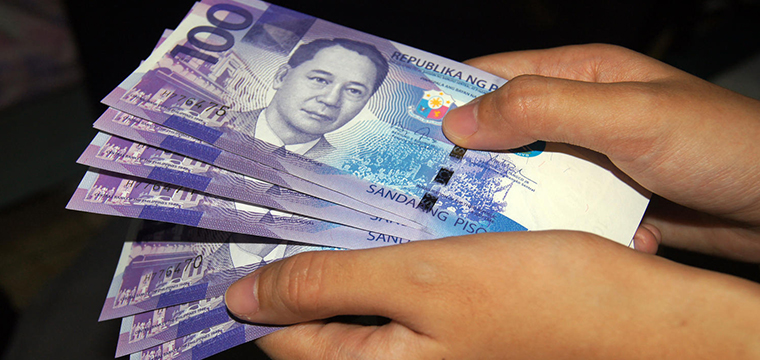Did You Really Make Money?
There is nothing like the rush you get from seeing the money you plunked into an investment grow in value

Question: Can you tell me how to determine if I really made money on my investment or not? I also get confused with what is published in the papers and in websites. In particular, what is the difference between cumulative and compounded annual growth rates? – asked at “Ask a friend, ask Efren” free service available at www.personalfinance.ph and Facebook.
Answer: There is nothing like the rush you get from seeing the money you plunked into an investment grow in value.
The only question is, “Did your investment really make money for you.”
What if it took so long for that investment to grow in value? What if your investment grew partly because you added money to it? Was the growth in value enough to even beat inflation?
This means that you will need to have a hurdle rate, a benchmark if you will.
A hurdle rate is that one (compounded annual) growth rate that you will need to grow your initial and subsequent periodic investments to reach that predetermined amount that you will need in the future.
To put it simply, if your required compounded annual growth rate or CAGR is 15 percent and your investment only returned 10 percent for you, you could say that while you made money, you did not make enough of it.
The two tasks at hand now are to learn how to: 1) arrive at that predetermined amount that you will need in the future; and 2) accurately measure your actual investment return.
To arrive at that amount you will need for the future, first identify a goal like sending children to school, taking a grand family vacation, buying a house, buying a car, funding retirement, funding advanced education for your children, or celebrating a milestone like a major anniversary.
Figure out how much that goal will cost if you were to spend for it today.
Then with the use of the appropriate inflation rate, grow that cost over the period (i.e. usually in years) from now until the time you plan to actually spend for that goal.
For simplicity’s sake, let us say you want to fund a grand family vacation wherein you will spend P500,000 in one lump sum if you were to take that vacation now.
Let us further assume that vacation expenses inflate at the rate of 4 percent per year. Finally, let us assume that you plan to take that grand vacation in 10 years.
In any spreadsheet software (e.g. MS Excel or Numbers), just enter the following formula: =fv(.04,10,0,-500000). The answer of Php740,122.14 means that 10 years from now, you will need this amount to take that grand family vacation (i.e. if the “$” sign appears, just ignore it or click the comma style icon).
Now let us say that you had already saved up P100,000 toward your vacation goal and that you decide to add P25,000 a year to your vacation fund.
By inputting the following into your spreadsheet: =rate(10,-50000,-100000,740122.14), you will get an answer of 11.81 percent.
This means that your starting investment, plus all of your additional investments must grow by 11.81 percent on an annual compounded basis for your vacation fund to amount to P740,122.14 in 10 years.
This same rate of 11.81 percent a year is the hurdle rate or benchmark that will help you determine the kind and mix of investments you will need to put money into to meet your goals.
In recent history, such a rate was earned from a balanced portfolio of stocks and bonds.
A higher allocation in stocks would have allowed for lower additional investments to meet your target amount. But risks in investing would have been higher.
On other hand, a high allocation in bonds would have required larger additional investments to meet your target amount. But risks in investing would have been lower.
You, therefore have to match your percentage asset allocation with your own risk preference.
Studies show that asset allocation determines performance 92 percent of the time.
Take note that irregular sized and timed additional investments, the use of expected and not just historical growth rates of investment outlets, the non-reinvestment of earnings and other factors will make these computations a bit tricky.
But let’s keep it simple for now.
Let us move on to the difference between cumulative growth rate and CAGR.
If you were offered investment A with a cumulative growth rate of 150 percent and investment B also with the same rate of 200 percent, which would you choose?
While many may choose investment B, it is important to take into consideration the time value of money, which cumulative growth rates do not.
Cumulative growth rates simply measure the change in the value of investments from a particular starting date up to the present time.
So if investment A’s growth rate was made over 5 years and investment B’s over 15 years, their CAGRs would be 8.45 percent and 4.73 percent, respectively.
In this example with all things being equal, investment A would have been the better choice.
CAGR is thus the more accurate measure to use when trying to know whether your investment made money for you or not.
* * *
Efren Ll. Cruz is a Registered Financial Planner of RFP Philippines. He is best selling book author of Pwede Na! (A Complete Guide to Personal Finance) in 2004, and is the chairman and president of the Personal Finance Advisers Philippines Corporation.
Source: http://business.inquirer.net/211082/really-make-money
Comments
2,994 total views, 1 views today












Social